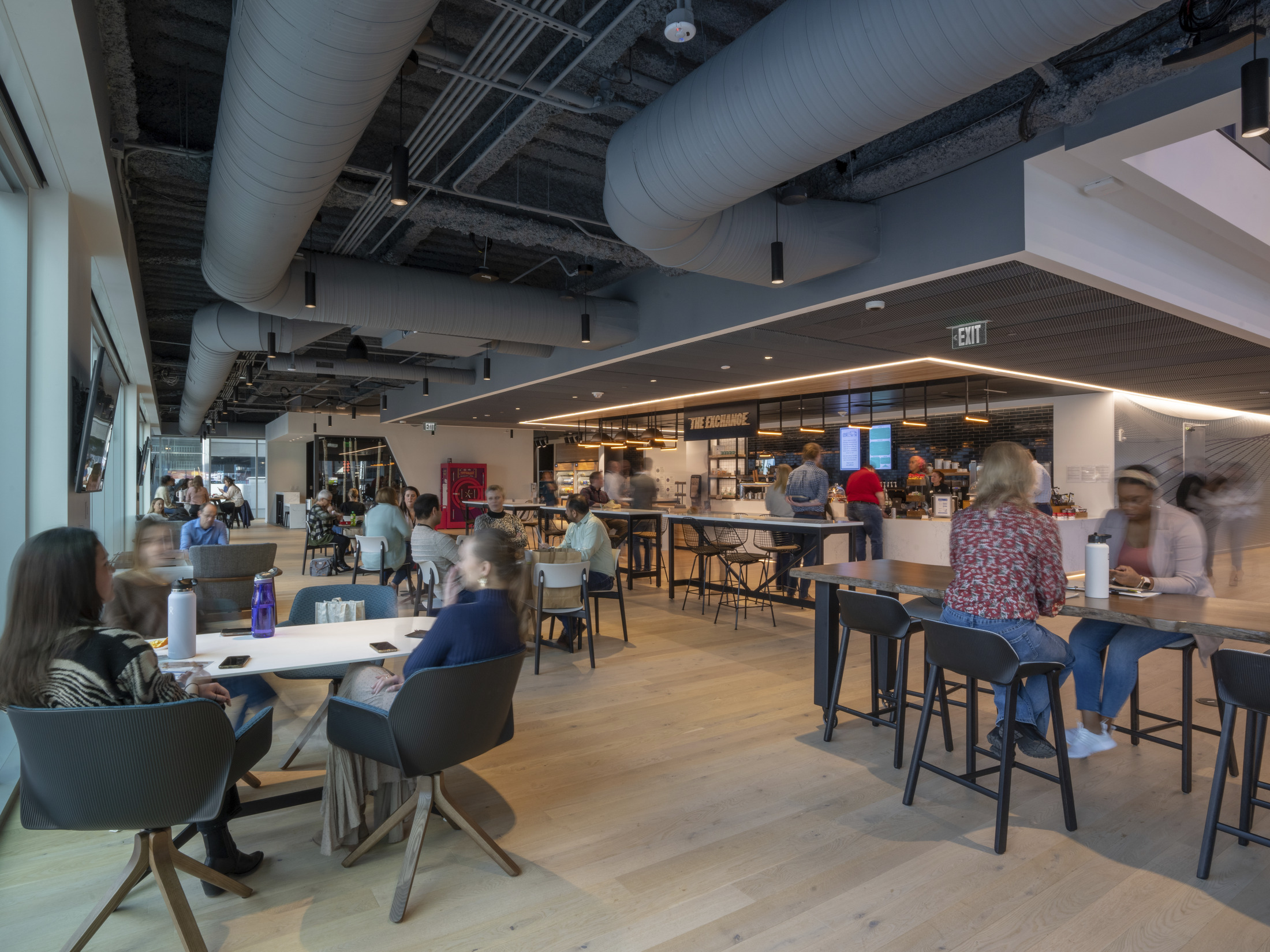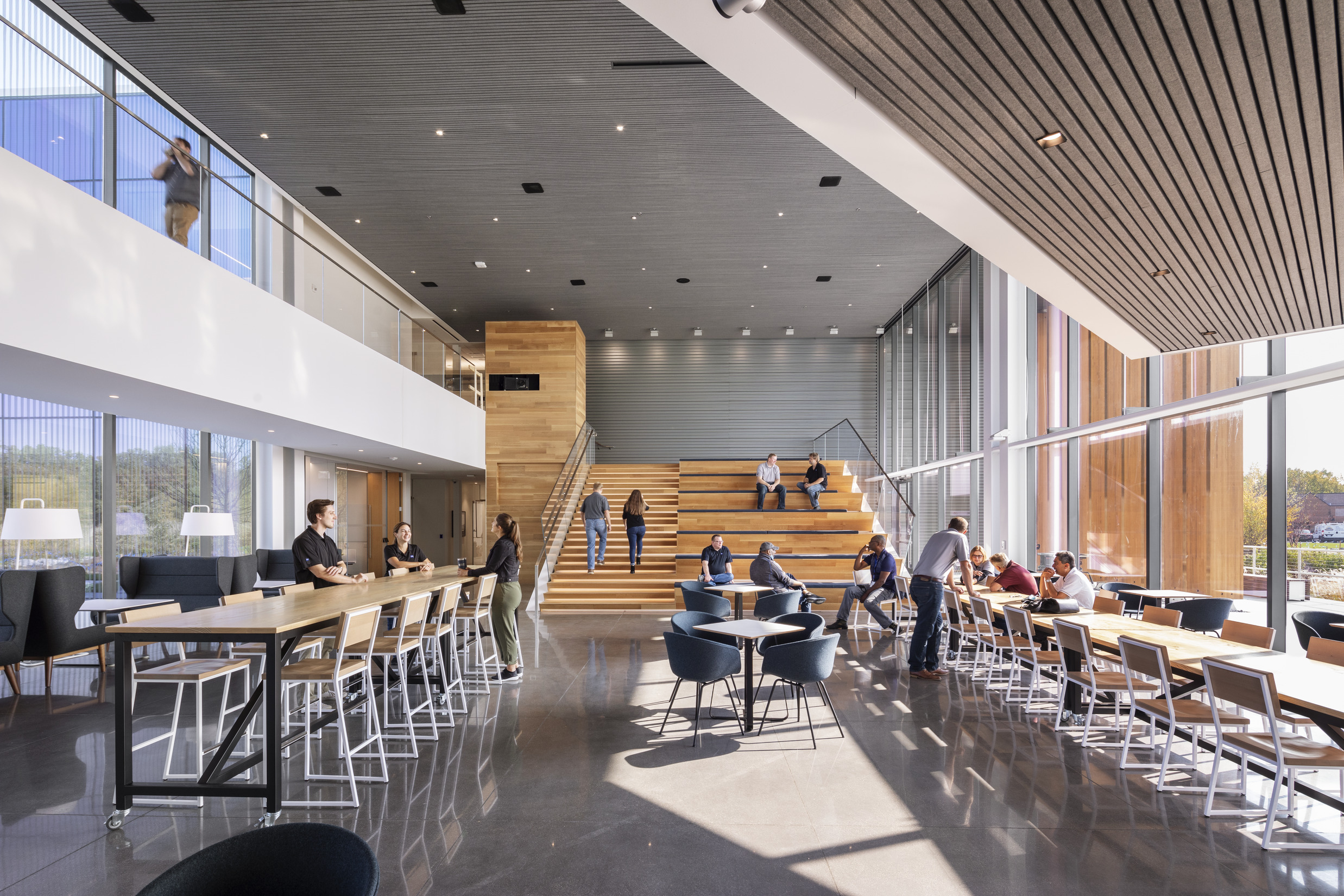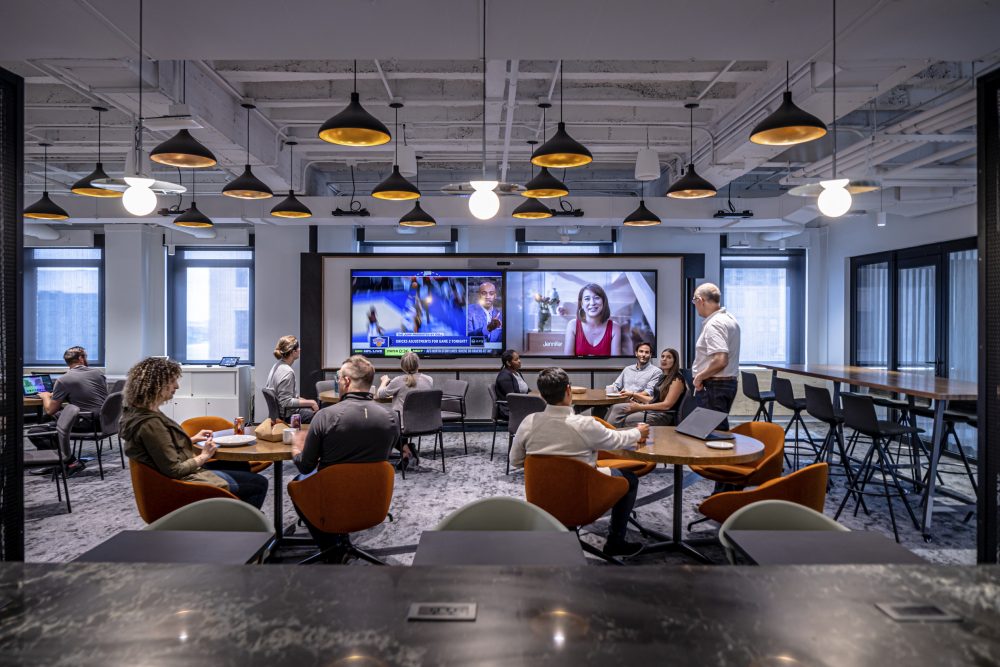SmithGroup’s Madeline Dunsmore outlines key changes office can make for hybrid meetings to create purposeful virtual and in person gatherings.
One of the more meme-able negative experiences of returning to the office is commuting to an office only to sit on video calls all day. Without in-person interaction, the commute doesn’t seem worth it. Even worse, is when people who are physically present in the same office participate in the same video call separately: together and yet alone. Choices about where to take a call and whether to be alone or together can make or break an in-office experience for employees.

Some are dubbing this the “connection tax” the additional work required to get the right people participating in the right medium (all virtual, all in-person, or hybrid) for the right conversations. This is especially true in structured hybrid organizations that have mandated in-office attendance for a set number of days per week. Often these Return to Office (RTO) plans lack training and support around collaboration. Meaningful interactions do not happen on their own—and it takes work to create purposeful gatherings. How can leaders, managers, and individuals be supported in doing the connection work required for successful hybrid organizations?

Equity of Presence
Finding the balance between being in-person and the fairness for virtual participants who cannot be in-person is a real challenge for hybrid collaboration and teaming. It is easy for virtual participants to feel left out of pre- or post-meeting discussions happening in a room. At the same time, for those in the office together, taking the same call from separate rooms defeats the purpose of having a shared space and the effort of commuting. Being intentional about the meeting mode (virtual only, in person only, or hybrid) becomes an important element of thinking about the why behind the meeting and the objective of the discussion. For example, at meetings where key decisions are being made, it might be better to be all in-person or all virtual to maintain an equity of presence for all participants.

Together – Alone
Choosing to take a video call alone when there are other participants collocated in your office could be intentional. If the meeting requires equity of presence for decision-making, or it is so large that not everyone can fit in one space—like a townhall or webinar—it could make sense to participate in the call at your workspace, phone booth, or a drop in area alone. But often, the choice to participate in a virtual meeting alone is habitual or due to barriers in technology and/or space.

There are many reasons why video calls are taken alone, even when other participants are in the same building. Our research shows they fall into three categories: technology barriers, space limitations, and behavioral/cultural norms.
Technology:
- Video, screen, or microphone technology is missing, broken, or hard to use in collaboration spaces.
- The camera does not focus and zoom in on the speaker—and room participants feel small and far away—while virtual participants are larger than life on the screen.
- It is hard to know what rooms are available without the ability to see if they are occupied and/or to reserve rooms ahead of time.
Space:
- There are not enough rooms of the right size or with the right furniture so everyone can be seen by the camera and see the screen simultaneously.
- Available meeting rooms are too far away from participants and not convenient to primary workspaces.
Behavior/Culture:
- People do not add a physical room to the invite, so participants don’t know where to go and login to the link by default.
- There is not enough time between meetings to move to another room and/or people find it more efficient to attend virtually.
- People take calls from their desk because it’s just “easier.”

You might find more than one of these barriers are to blame for people participating in the video calls together-alone, and a multi-pronged approach is necessary to improve the collaborative experience. Finding the root cause helps craft solutions. Below are some ideas to start developing an action plan.
Technology:
- Investment in technology that is easy to use for better hybrid meetings. The goal is to “walk in and start collaborating.”
- Every collaboration space needs to be equipped with, at a minimum, screens, a camera, microphones and speakers. Smart whiteboards and other specialty tools can also be utilized.
- Training or user guides posted in meeting rooms can help people get connected quickly.

Space:
- Greater variety and quantity of types of collaboration spaces.
- Furniture optimized for video calls and hybrid collaboration.
- Meeting rooms closer to the workspaces to minimize travel time.
Behavior/Culture:
- Have an open discussion about observed behavior. This could be in smaller team meetings, at the management or leadership level, or included in the next All-Hands agenda or RTO update.
- If you know more than one person will be in the same location for the meeting, add a meeting room to the invite or coordinate to find a space to participate together.
- Establish a norm of 25- or 50-minute meetings to allow people time to travel and reset in between meetings.

Hybrid meetings (video calls where some participants are together in person and others are virtual on the screen) are hard—but video calls are the new norm. As many companies embrace a hybrid model, video calls will continue to be a major component of how we work, and it is important to examine and improve the hybrid meeting experience. Great leaders and managers are doing the work of understanding the barriers and giving teams the tools to connect and gather with purpose.
All photos courtesy of SmithGroup.

